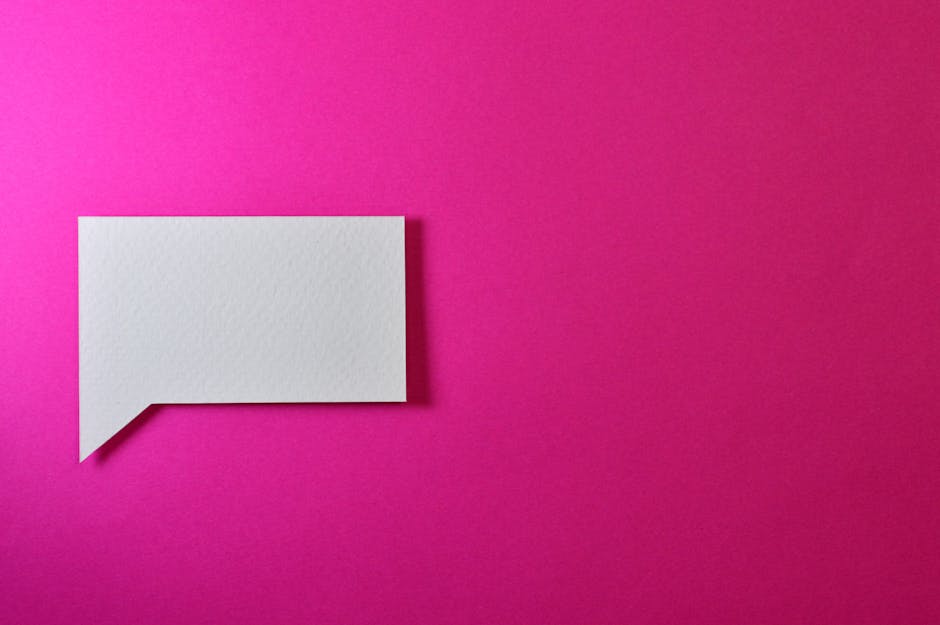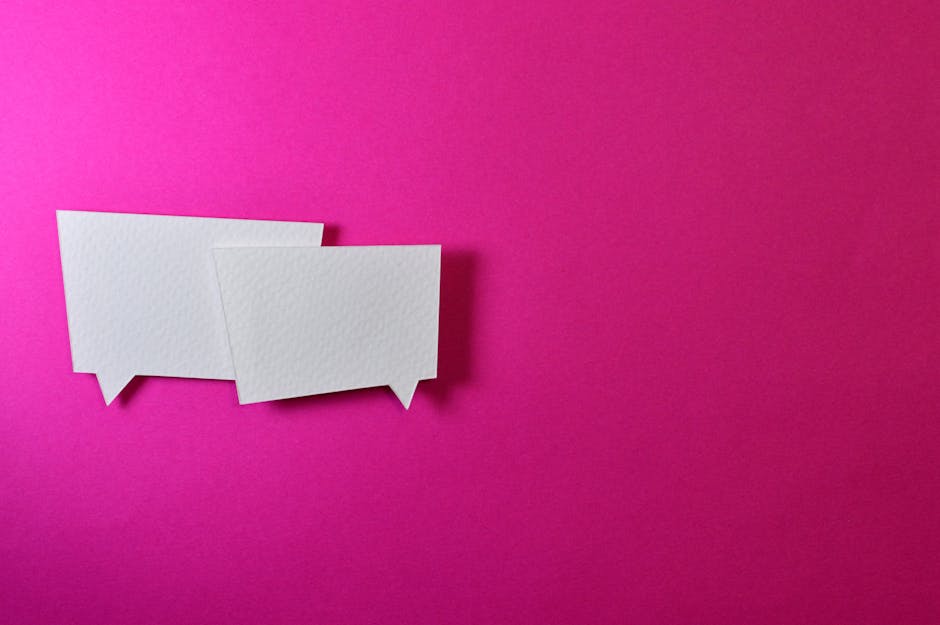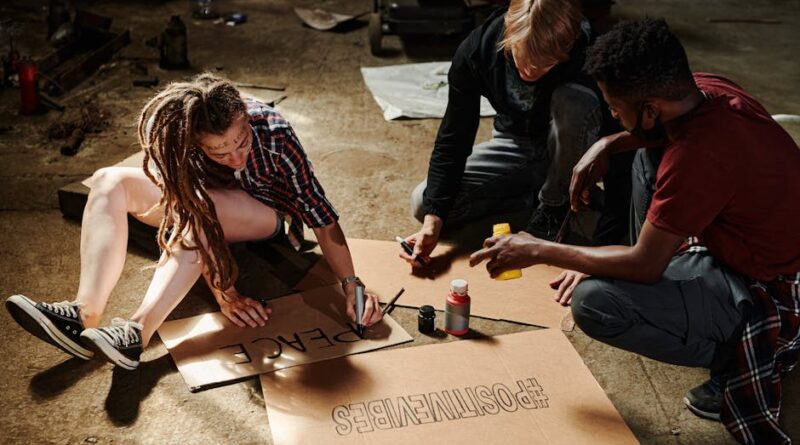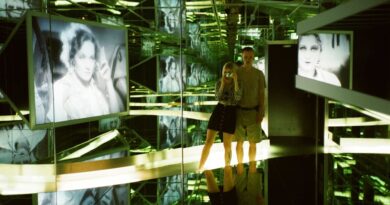Creating Art That Sparks Dialogue
Art has always been a powerful medium for expressing thoughts, emotions, and ideas. However, beyond its aesthetic appeal, art has the unique ability to provoke conversation, challenge perceptions, and ignite change. In a world where communication is key, creating art that sparks dialogue has become increasingly important. This article explores the various aspects of how art can be used to engage in meaningful conversations, inspire critical thinking, and foster a deeper connection with the world around us.
The Power of Art in Starting Conversations

Art has the remarkable ability to transcend language barriers and communicate on a universal level. Whether it’s a painting, sculpture, installation, or performance, art has the power to evoke emotions and provoke thought in ways that words often cannot. Through the use of colors, shapes, textures, and symbolism, artists can convey complex ideas and concepts that resonate with viewers on a deep and personal level.
One of the key roles of art in sparking dialogue is its ability to challenge the status quo and push boundaries. Artists often use their work as a means of questioning societal norms, addressing political issues, or shedding light on injustices. By presenting alternative perspectives and challenging viewers to think critically, art can serve as a catalyst for important conversations that may not have otherwise taken place.
Historical Examples of Art That Sparked Dialogue

Throughout history, there have been numerous examples of artworks that have sparked dialogue, controversy, and even change. One such example is Picasso’s iconic painting, Guernica, which was created in response to the Spanish Civil War. The powerful imagery of the painting, depicting the horrors of war and the suffering of innocent civilians, sparked international outrage and brought attention to the devastating consequences of conflict.
Another historical example is the feminist art movement of the 1960s and 70s, which sought to challenge traditional notions of gender, sexuality, and power. Artists such as Judy Chicago, Barbara Kruger, and Cindy Sherman used their work to address issues of inequality, representation, and objectification, sparking important conversations about women’s rights and the role of women in the art world.
The Role of Art in Addressing Social Issues

Art has long been used as a tool for addressing social issues and advocating for change. From the civil rights movement to the environmental movement, artists have played a crucial role in raising awareness, inspiring action, and giving voice to marginalized communities. Through their work, artists can shine a light on issues such as racial injustice, climate change, poverty, and human rights violations, prompting viewers to reflect on their own beliefs and values.
One powerful example of art addressing social issues is the street art movement, which uses public spaces as a canvas for political and social commentary. Artists such as Banksy, Shepard Fairey, and JR have used their work to draw attention to issues such as immigration, surveillance, and corporate greed, sparking conversations and challenging the status quo. Street art has the unique ability to reach a wide audience and engage people in unexpected ways, making it a powerful tool for social change.
Art as a Tool for Healing and Empathy

Art has the capacity to heal, inspire, and foster empathy in ways that are truly transformative. Whether it’s through music, dance, theater, or visual art, creative expression has the power to connect us with our emotions, experiences, and the world around us. In times of crisis, trauma, or uncertainty, art can provide solace, comfort, and hope, allowing us to process our feelings and connect with others on a deeper level.
Art therapy, for example, is a form of psychotherapy that uses art-making as a means of self-expression and exploration. Through the process of creating art, individuals can gain insight into their thoughts and emotions, develop coping skills, and work through trauma and difficult experiences. Art therapy can be particularly effective for individuals who may struggle to articulate their feelings verbally, providing a safe and non-verbal outlet for expression.
The Future of Art in Sparking Dialogue
As we look to the future, it’s clear that art will continue to play a vital role in sparking dialogue, fostering connection, and inspiring change. With the rise of technology and social media, artists have more platforms than ever to share their work and engage with audiences around the world. Virtual reality, augmented reality, and interactive installations are pushing the boundaries of traditional art forms, creating immersive experiences that challenge viewers to think differently and engage with art in new ways.
Furthermore, as issues such as climate change, social inequality, and political unrest continue to dominate the global conversation, artists are using their work to address these pressing issues and inspire action. Collaborations between artists, activists, scientists, and policymakers are becoming more common, as different disciplines come together to find creative solutions to complex problems. By working together, artists and change-makers can amplify their voices, reach new audiences, and spark meaningful dialogue that leads to real-world impact.
Expert Opinions on Creating Art That Sparks Dialogue
According to renowned artist and activist Ai Weiwei, “Art is not a luxury, but a necessity. It is a tool for social change, a means of communication, and a way of understanding the world around us.” Weiwei’s work, which often addresses issues such as human rights, censorship, and freedom of expression, has sparked important conversations and brought attention to injustices around the world.
Art historian and curator Dr. Sarah Thornton believes that “Art has the power to challenge, provoke, and inspire. By creating work that pushes boundaries and challenges the status quo, artists can engage viewers in meaningful conversations and encourage them to think critically about the world we live in.”
Common Misconceptions About Art That Sparks Dialogue
One common misconception about art that sparks dialogue is that it must be controversial or confrontational in order to be effective. While controversial art certainly has its place in challenging norms and sparking debate, art that sparks dialogue can take many forms, from subtle and contemplative to bold and provocative.
Another misconception is that art that sparks dialogue is only for a select audience or elite group of intellectuals. In reality, art has the power to engage people from all walks of life, regardless of their background, education, or experience with art. By creating work that is accessible, inclusive, and emotionally resonant, artists can reach a wide audience and foster meaningful conversations that resonate with diverse perspectives.
Conclusion
In conclusion, art that sparks dialogue is a powerful tool for engaging with complex issues, challenging perceptions, and inspiring change. By creating work that is thought-provoking, emotionally resonant, and socially relevant, artists can spark conversations, foster empathy, and bring people together in a shared experience. Whether it’s through addressing social issues, advocating for change, or exploring personal experiences, art has the unique ability to transcend boundaries, connect people, and inspire meaningful dialogue that has the power to transform individuals and communities alike.
As we continue to navigate an ever-changing world, it’s clear that art will play a crucial role in shaping our future, sparking important conversations, and bringing about positive change. By embracing the power of art to provoke thought, challenge perceptions, and inspire action, we can create a more empathetic, connected, and compassionate society that values creativity, diversity, and dialogue.




